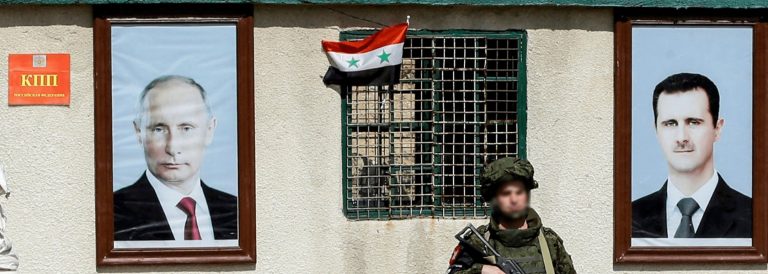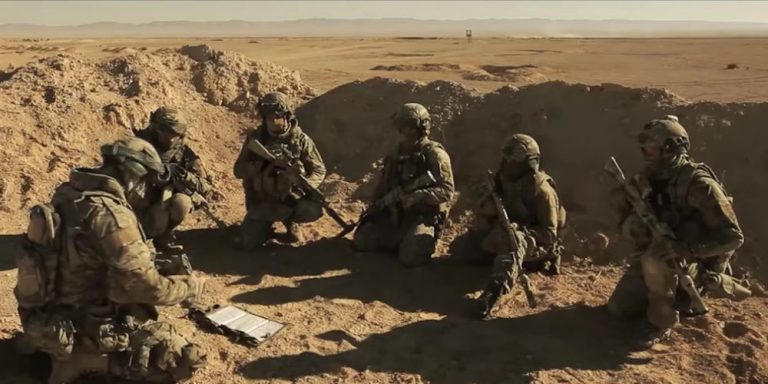They just don't exist. Investigation
The Syrian campaign of the mysterious "Wagner PMC": numbers and weapons, key operations and conflict at the top of the Ministry of Defense
Novaya Gazeta – Irek Murtazin – October 9, 2017
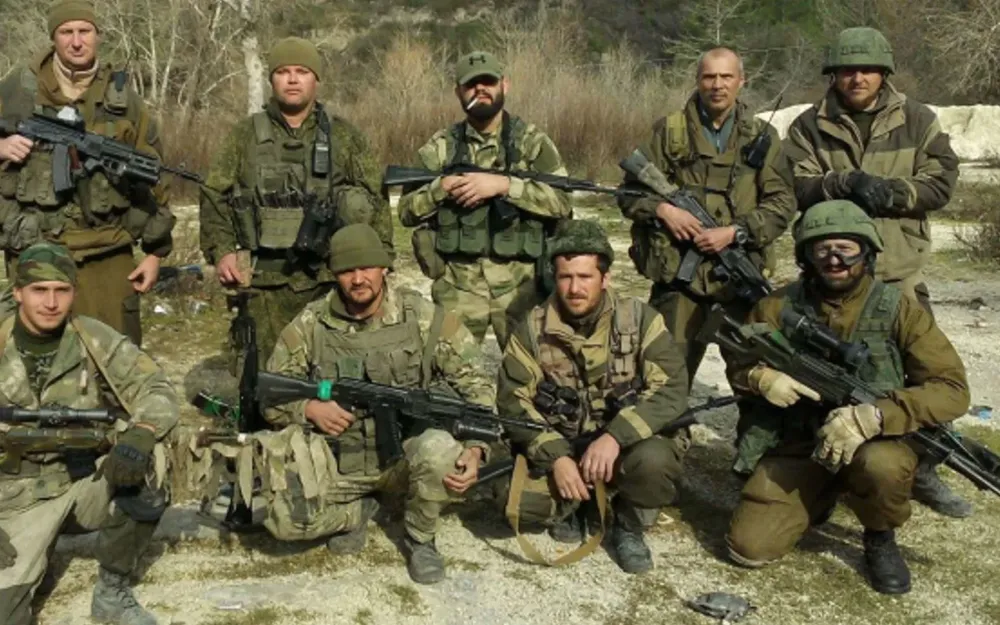
Twelve units of "cargo 200" – the dead employees of the Wagner PMC – were delivered to Rostov-on-Don. And this is not the worst news from Syria, where hundreds of Russian citizens are either fighting or not fighting.
The flow of negativity flooded in after the Ministry of Defense reported on the elimination of the leaders of the ISIS banned in the Russian Federation and announced the final defeat of the terrorist organization. As recently as August 13, Russian Defense Minister Sergei Shoigu said on the Rossiya 24 TV channel that the liberation of the city of Deir ez-Zor from terrorists is a key event in the fight against terrorists: "This is the main point on the Euphrates, after the capture of which it will be possible to talk about the completion of the fight against ISIS."
On August 25, the commander of the Group of Forces of the Russian Armed Forces in Syria, Colonel-General Sergei Surovikin, from the Khmeimim airbase, made a teleconference and said that after the lifting of the blockade of the city of Deir ez-Zor, "the defeat of the main forces of ISIS terrorists and the elimination of their last stronghold on Syrian soil will be completed."
According to operational reports, the situation of the terrorist international, apparently, looked so deplorable that on September 12, Russian Defense Minister Sergei Shoigu flew to Damascus and met with Syrian President Bashar al-Assad. The Russian military department reported on the meeting, distributing a press release, the essence of which is that the conversation between the Russian minister and the Syrian president took place "in the context of the successful actions of the Syrian government troops with the support of the Russian Aerospace Forces after the completion of the destruction of the ISIS terrorist group in Syria."
Deir ez-Zor was indeed unblocked and liberated. The construction of crossings to cross the Euphrates River began in order to launch an offensive on the left bank – in the direction of the ISIS-controlled oil fields of Umar and Tanak. At the same time, the concentration of personnel and armored vehicles began to attack the city of Mayadin located on the right bank of the Euphrates, declared the new capital of the Islamic State.
ISIS counterattacks
But since mid-September, the operational situation has deteriorated sharply. The terrorists managed to mobilize resources for the counteroffensive. Received ISIS and fresh reinforcements. From the territory of Jordan, in the area of al-Tanf, several large detachments of militants penetrated into Syria.
On September 18, terrorists launched an offensive in the direction of the city of Hama, which is located in the Idlib de-escalation zone. Even tanks were thrown into the battle, the offensive was preceded by powerful fire training. As later reported by the Ministry of Defense of the Russian Federation, only in one day "the militants managed to wedge into the defense of government troops to a depth of 12 kilometers, at the front – up to 20 kilometers."
The result is the encirclement of a Russian military police platoon. To save 29 Russians, it was necessary to lift almost all the aviation from the Khmeimim airbase into the air and urgently transfer mobile groups of the Special Operations Forces plus the Wagner reconnaissance and assault company from near Deir ez-Zor to Idlib.
No sooner had they caught their breath than on September 28, ISIS launched a new offensive operation, attacking almost simultaneously many checkpoints on the Palmyra-Deir ez-Zor highway.
That's when the bad news from Syria poured in.
The commander of the Far Eastern 5th Army, Lieutenant General Valery Asapov, and the commander of the 61st Marine Brigade of the Northern Fleet, Valery Fedyanin, were killed.
The terrorists captured the "Wagnerians" Roman Zabolotny and Grigory Turcana (this was reported by Novaya Gazeta and other media).

How many Russians have pogibli in Syria
Twelve Russians killed in Syria, presumably fighters of the Wagner PMC, were told by Radio Liberty, citing a woman familiar with the ISIS-captured Roman Zabolotny.
There is no official confirmation of this information. But the specialists interviewed by Human Rights Watch, including the officers of the Ministry of Defense who returned from a special mission to Syria, and the "Wagnerians" who participated in the first liberation of Palmyra, and then Aleppo, were not at all surprised by the twelve "cargoes of 200".
"It is surprising not the number of deaths, but the fact that information about this was leaked," one of our interlocutors shared his thoughts. "Taking into account the intensity of hostilities in the area of Idlib and Deir ez-Zor, as well as the surprise of the militant attack on the checkpoints, the dead may be an order of magnitude more …
"It's an axiom of fighting," another source added. – The ratio of casualties in offensive operations is one to three. If the Ministry of Defense reports on thousands of eliminated militants, then the losses of the Assad army and our "attached" forces are correlated with the losses of terrorists. Even if most of the losses fall on the Syrians, then our guys are also not bulletproof…
The commander of the Group of Forces of the Russian Armed Forces in Syria, Colonel-General Sergei Surovikin, reported that for three months, from May to August 2017, the enemy's losses "amounted to more than 8 thousand militants, 1.5 thousand units of weapons, military and other equipment, and this number is increasing every day."
If in three months the militants lost 8,000 killed, and in September their losses continued to increase, how many killed and wounded did the Assad army and the Wagner PMC lose? However, the Ministry of Defense does not bear formal responsibility for the "Wagnerians", and therefore, apparently, it is not disingenuous about the absence of major losses in its ranks. And this means only one thing: we are unlikely to know the exact number of dead Russians (even over the past month). But these are clearly not twelve people whose bodies were brought to Rostov.
Another of my interlocutors, a "Wagnerian" who participated in the first liberation of Palmyra, said that two airborne assault companies, a tank company and an artillery battalion participated in the battles for the liberation of the ancient city:
– The tank company was commanded by a legless man of about 50 years. He has been in Syria since 2015. After being blown up by a mine, his leg was amputated, but he recovered and returned. On a prosthesis. It was rumored that he was a retired lieutenant colonel, who commanded a tank battalion before being discharged from the army. There were only former tank officers in the tank company, even drivers and gunners. Of course, they did not climb into the tanks very quickly, but already in the tanks they did such miracles, you can look into it. The Goblins also had many officers….
– What kind of "goblins"? – I interrupt the "Wagnerian".
– That's what we called the gunners.
– Why "goblins"?
"Well, they were buried so deep that we began to joke: they say, instead of trenches, you will not dig out the caves and do not start living there … The Goblins also performed miracles. Almost didn't miss… But there were still a lot of losses among ours. Twenty people were killed, only in my platoon three. And two are Ukrainians.
– By nationality?
– No, citizens of Ukraine. Wagner has a lot of them. Yeah, there's no one there. In our company there was also a "citizen of the world", who served in the French Legion. He met a fellow soldier there near Palmyra, by the way.
— ?
– And they served together in the French Legion. We climbed the hill, which had previously been tightly treated by the Goblins. And we see ten corpses of "blacks". And then our "Frenchman" suddenly grabs a bayonet knife and begins to dissect the camouflage on one of the dead. And shows us a tattoo on the right arm of the corpse. "Exactly, he," he says. "Who?" we ask. "Yes, the scum is over, 'worked' together in the legion…"

"NEW" HELP
"Wagner PMC" is the informal name of a private military company led by Dmitry Valeryevich Utkin, a retired lieutenant colonel, former commander of the 700th separate special forces detachment of the 2nd separate special forces brigade of the GRU, stationed in Pechora.
"Wagner PMC" "lit up" during the disarmament of Ukrainian units in the Crimea in 2014 and in the fighting in the Donbass.
The first evidence of the appearance of the Wagner PMC in Syria dates back to October 2015, when the Wagnerians suffered losses.
"PMC Wagner" took part in the liberation of Palmyra and Aleppo.
The total number of "Wagner PMC" is about 6000 people, of which at the moment about 2500 are in Syria.
Prospects for the legalization of "Wagnerians"
Three independent sources – a Syrian military intelligence officer, an officer of the General Staff of the Russian army and one of the staff of the Wagner PMC – named the approximate number of "Slavic volunteers" fighting on the side of Bashar al-Assad. There are several thousand of them. The main backbone of PMCs consists of four reconnaissance and assault brigades. Each has three companies of up to one hundred men.
In addition to reconnaissance and assault brigades, the Wagner PMC has formed:
- artillery division (about three hundred fighters in three fire batteries of one hundred people each);
- a tank company (about fifty men in three platoons, each with four tanks);
- sabotage and reconnaissance company (about one hundred and fifty people);
- engineer and sapper company (about a hundred people);
- a signal company (about a hundred men);
- staff and auxiliary units, numbering about two hundred people.
It is quite obvious that in its structure the Wagner PMC is a deployed military unit. But at the same time, it is not formally connected with the Ministry of Defense. Although they train "Wagnerians", refreshing their skills gained during their service in the Russian army, at the base deployed near the Molkino farm of the Krasnodar Territory, and they use the same training grounds, tankodromes, shooting ranges, where training and combat training of military unit 51532, known as the "10th brigade of the GRU special forces", is carried out. And they are transferred to Syria by Russian Aerospace Forces aircraft and large landing ships of the Navy (it was the BDK that delivered "Wagnerian" "goblins" to Syria along with howitzers, anti-aircraft guns, mortars received from army depots in Russia).
The discussion of the legalization of the Wagner PMC has been going on almost since the very beginning of the deployment of the Russian group in Syria – from September 30, 2015. By the way, the Wagner PMC about the plans of the military-political leadership of Russia, apparently, learned a few months before the transfer to the Khmeimim airbase. In any case, according to Nova, at the end of July 2015, a large group of contractors appeared at the base near Molkino, which began to purposefully prepare for a business trip to the Middle East.
And in August 2015, discussions began on amendments to the law "On Military Duty and Military Service", allowing the conclusion of so-called "short-term contracts". As reported to "Nova" in the Ministry of Defense,
"On November 18, 2015, the text of the bill was published in the public domain on the federal portal of draft regulatory legal acts on the website of the regulation.gov.ru. According to the results of examinations and public discussion, the bill did not receive negative reviews.
In addition, a legal norm providing for the possibility of concluding "short-term" contracts has existed in Russian legislation since 1996. The draft law only specifies the conditions that determine the right to conclude contracts for a period of up to one year. For example, if the amendments are adopted, conscripted servicemen participating in long-distance cruises of Navy ships will be entitled to conclude a short-term contract on a voluntary basis before the completion of the ship's voyage. "

Despite the vagueness of the wording, it was obvious that the amendments were adopted precisely under the "Wagnerians".
But the passage of the bill has stalled. The State Duma adopted it only on December 14, 2016 – in three readings at once. The promptness of the State Duma was preceded by a clear signal received from the Kremlin. Five days before the adoption of amendments on "short-term" contracts", on December 9, 2015, a solemn reception dedicated to honoring the Heroes of Russia was held in the St. George Hall of the Kremlin. Among the invitees was Dmitry Valeryevich Utkin, the head of the Wagner PMC. And with him are at least three of his closest associates.
However, enough time has passed since the adoption of amendments to the law "On Military Duty and Military Service", allowing to legalize the "Wagnerites", but not a single contract with the fighters of the Wagner PMC has yet been signed.
According to Novaya Gazeta, two opposing groups have formed to date. Among the opponents of the legalization of chevekashniki, for example, the State Secretary, Deputy Minister of Defense of Russia, Army General Nikolai Pankov. In addition, the military counterintelligence of the FSB is also strongly opposed to legalization. Among the supporters is the head of the Main Intelligence Directorate of the General Staff, Colonel-General Igor Korobov.
The "pool" of supporters of the legalization of chevekashniki managed to lobby for the participation of "Wagnerians" in the Kremlin solemn reception and the acceleration of the adoption of the law on "short-term contracts".
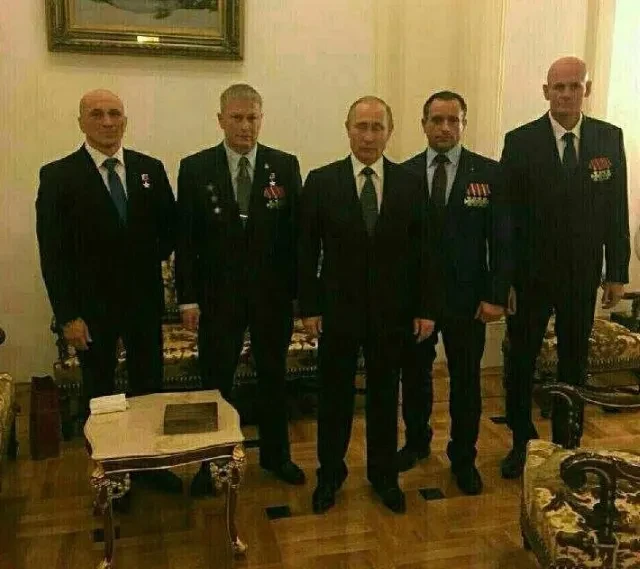
"Wagnerians" with President Putin after a solemn ceremony in the St. George Hall of the Kremlin. December 9, 2016.
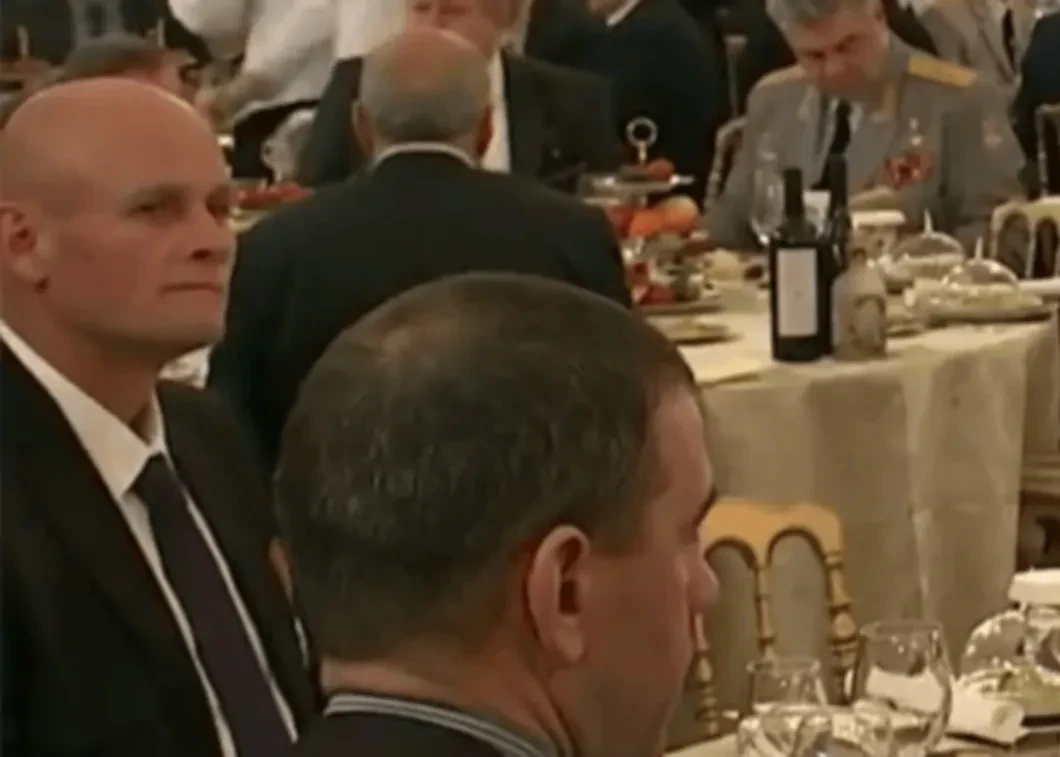
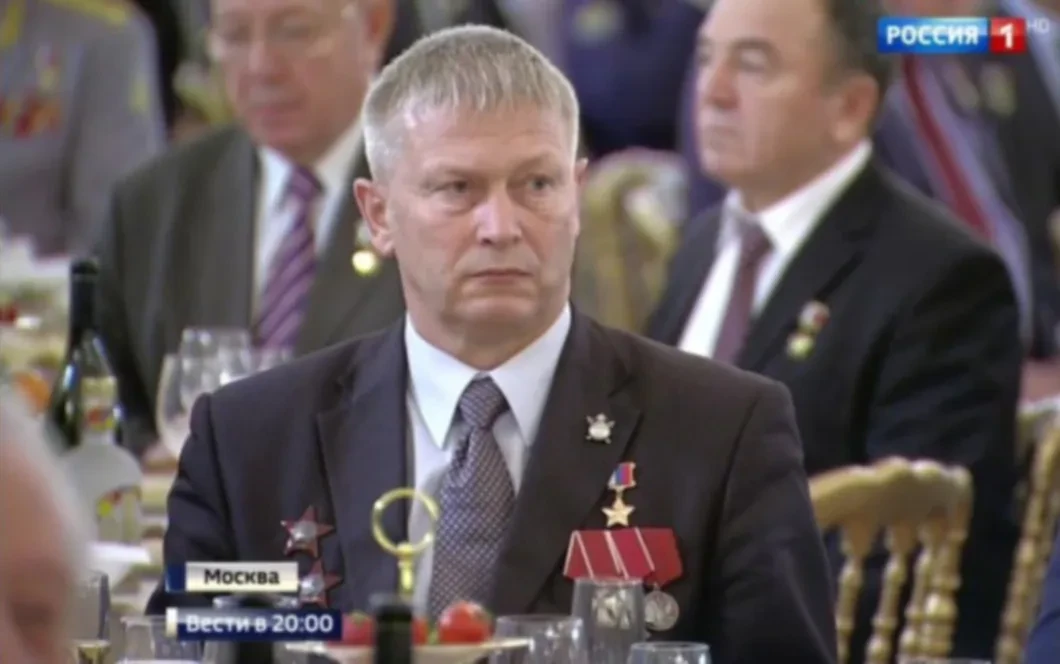
The "pool" of opponents has so far managed to stop the application of the law on the "Wagnerians". There are two main arguments in the course – the budget of the Ministry of Defense does not provide for the costs of paying for the contracts of the chevekashniki, and the second – the Ministry of Defense will have to recognize the losses of the Wagnerians as its own …
Meanwhile, people are dying. They are like a draw, which means that no one needs them.

